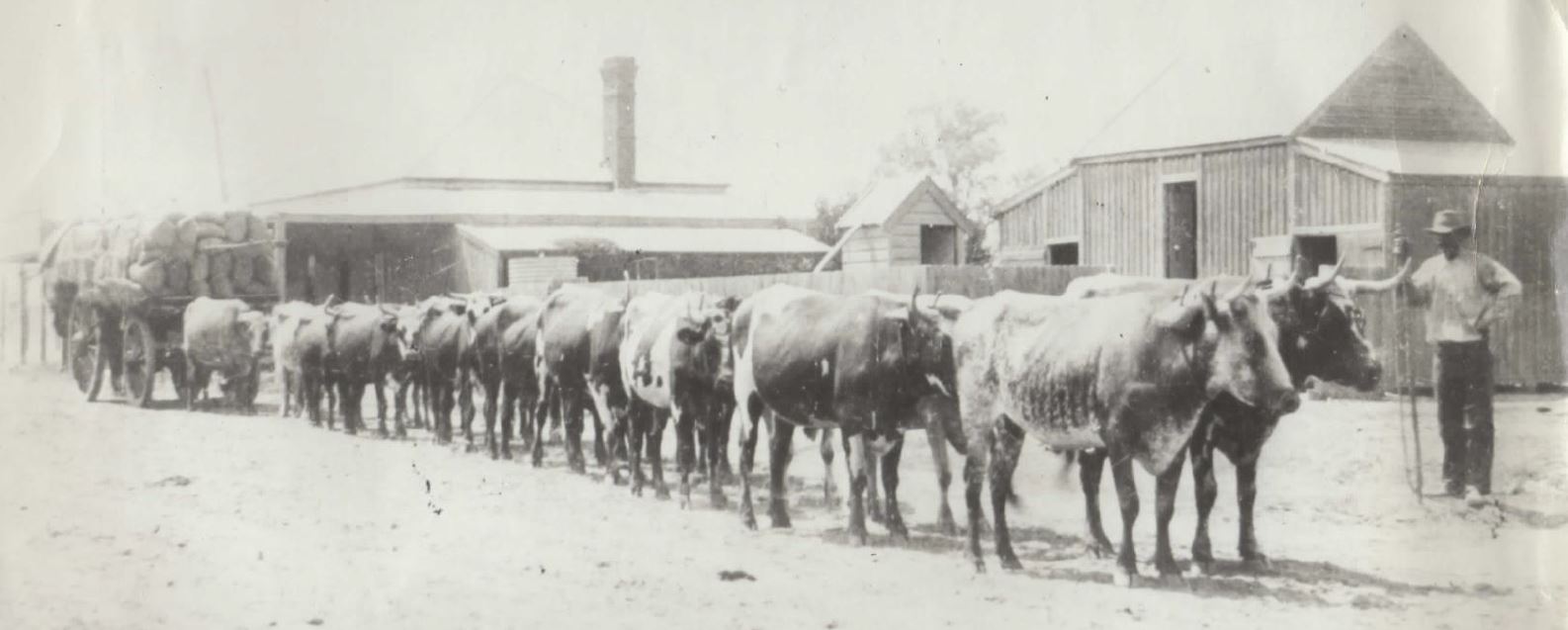- Home
- Archive: May, 2019
Training the Bullocks
On an extensive visit to the Victorian Goldfields in 1852-54, the famous English writer William Howitt visited the Reid family at “Carraragarmungee” (today’s “Reidsdale”). He reported on various things of interest for an English audience, among them on how to train a young bullock to join a team. This was very important at the time since bullock teams were the long distance trucks of their day, hauling heavy loads over rough tracks to keep the far flung settlements supplied. Several of the early Bowmans Forest selectors were engaged in this trade which provided a good living and enabled them to purchase farming land.
“Here, also, we saw the method of breaking in young bullocks to the yoke. Having managed to drive one of them up in a corner of a paddock, behind some steady old bullocks, they got on a yoke as well as they can – very commonly a task of no ordinary difficulty. Once on, however, theyput into the same yoke a stout, steady, practical bullock; and they then tie the tails of the two animals together, or the young wild ox would soon wheel around, and thus turn the yoke upside down. Thus yoked together, the pair is let loose, and the poor victim of a practised bullock is dragged and pulled about by the young frantic one, in a most unceremonious manner. For a day or so the tyro is a most uncomfortable companion to the steady one. He makes the most violent efforts to get rid of his newfangled machinery. He rears and kicks, and tries to rush here and there. He snatches and drags, and darts forward, and as suddenly hands back, as if he were trying to just pull off the other bullocks head, and did not care how soon. He refuses to eat, and won’t let the poor wretch of a yoke fellow eat either according to the temper of the subject, the two are struggling and wrangling. The poor patient prisoner to the fiery neophyte holding down his head, and silently but stiffly resisting the efforts of the youngster. At length hunger tames the impatient juvenile; he begins to eat and becomes quiet; the elder is glad to avail himself of this improved circumstance, and soon all is right. The young beast finds this primitive bond of unity is an indissoluble bond so long as his master pleases, and the two are left to bear the yoke itself but to all commands under it that the driver is pleased to impose”.
